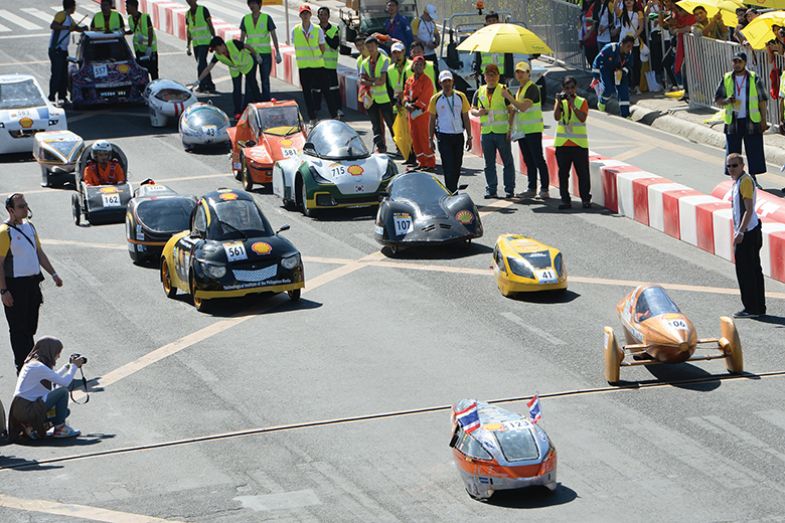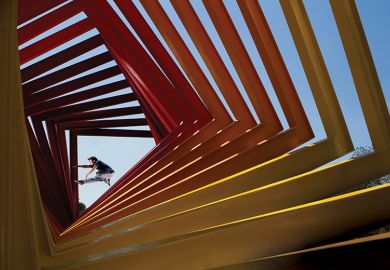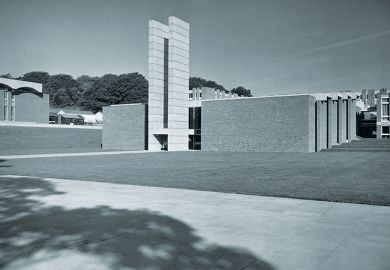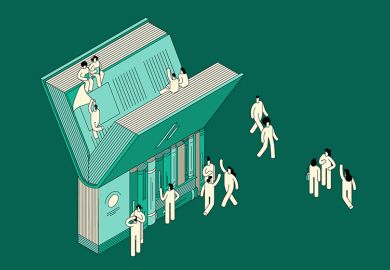View the THE Young University Rankings 2021 results
If given the opportunity to design a new university today, how might we build such an institution to be distinctive, unlike any other?
To ask such a question might seem quixotic and impractical, given the disruptions to higher education caused by Covid-19. The pandemic has forced far too many institutions to take drastic measures to keep their enterprises afloat; now hardly seems the time to daydream about imaginary universities. But this may in fact be an opportune moment to reimagine the university, to think differently about its purpose and what it can become.
Higher education is facing two strategic problems, which started even before Covid-19. First, the sector is quickly becoming commoditised; outside a few world-class, top-ranked institutions, many universities are competing with each other for a shrinking pool of students, offering similar programmes and vying on price.
The second problem is a lack of strategic imagination and creativity. “The Idea of the University” is converging toward a unitary idea; many institutions of higher education aspire to look like every other institution. Ronald Barnett, emeritus professor at UCL’s Institute of Education, writes in his 2012 book, Imagining the University, that “all systems of higher education across the world are moving inexorably in the direction of the marketised university…Consequently, the pool of ideas through which the university is comprehended is shrinking.”
Keri Facer, professor of educational and social futures at the University of Bristol, similarly observes in her 2011 book, Learning Futures: Education, Technology and Social Change: “The educational imagination of the last two decades has been dominated by one particular vision of the future, a vision of a global knowledge economy fuelled by global competition and sustained by digital networks.” Outside of a few novel programmes or teaching innovations, there is very little enterprise-level innovation in higher education. Especially in a post-Covid educational landscape, what is needed today is greater strategic imagination about the epistemological form and purpose of the university.
In my book, Alternative Universities, I propose 10 models for new ideas of universities:
Platform university
This university is organised as a multisided platform, which is an enterprise that does not sell or produce anything but instead exists only to connect buyers and sellers, similar to eBay or Facebook. Like the Athenian Agora, it facilitates interactions between people, but is otherwise agnostic about the kind and nature of those interactions. A platform university would connect teachers and students and the curricula would emerge from their unplanned interactions, based on the interests of both.
Microcollege
A microcollege consists of one professor and 20 students. The curriculum and pedagogical philosophy of the microcollege are as unique as the solitary professor or vice-chancellor who leads it. Students learn through a combination of weekly lectures, Oxford-style tutorials, technologically mediated self-paced learning and peer mentorship. There would be hundreds of these small, decentralised colleges, replacing the idea of the singular mega-university.
Humanities thinktank
A standard policy research institute, the humanities thinktank is staffed and led by scholars from the humanities disciplines – literature, history, religious studies, art history, philosophy. The researchers ask questions of interest to a wider public and contribute to a broader public discourse, but unlike the traditional public intellectualism of humanists, the knowledge produced is intended to influence policymaking.
Nomad university
In a post-Covid world, work is no longer tied to a specific physical place. Similarly, a nomad university has no single location. Students arrive somewhere in the world and work under the guidance of a faculty member on a specific local problem, simultaneously immersing themselves in the local culture. Then, after a six- to eight-month stay, the students disperse to head off to another experience with another faculty mentor in another location solving another local problem. In addition to acquiring a broad set of skills, students gain an “education in place”. Students graduate after completing eight of these globe-spanning experiences.
Liberal arts college
The curriculum of the liberal arts college is organised around seven broad intellective skills: complex problem-solving, sense-making, making, imagination, multimodal communication, cross-cultural competency and leadership. It is a 21st-century update on the ancient trivium and quadrivium, which is how subjects were divided in medieval universities. Students demonstrate mastery of each of the seven skills as a condition of graduation.
Interface university
This university is based on the idea that the future of cognition will be characterised as a hybrid of artificial intelligence and human intelligence, and that the future of work will involve humans and machines partnering together. At this university, students take standard courses and standard majors, but in each case learn to partner with algorithms. Students learn how to think with computers, not simply as a tool but as an extension of human cognition.
University of the body
This institution develops the literacy skills necessary for students to decode and to compose in a world of externalised media – where information has moved off screens and into the surrounding environment. This university prepares students to interpret the symbols and information that will come to us via all of the senses.
Institute of advanced play
At this university, imagination is valued higher than knowledge. Play is treated as a sophisticated cognitive activity, an important source of creativity and innovation. The institute is a kind of “playground” for adults to engage in serious play, where serendipity and unplanned, unexpected insights are the results.
Polymath university
Each student majors in three cognitively disparate disciplines, meaning they are required to demonstrate mastery of three distinct habits of mind: they major in one of the sciences, in one of the arts or humanities, and one of the professional disciplines. Innovative and creative ideas emerge at the boundaries between different disciplines and students learn to negotiate those complex boundaries.
Future university
Students at a future university visualise, design and prototype the future in order to build that future. The curriculum is balanced between pure “futuring” (exploring the future for no other reason than a curiosity about what might be next), applied futuring (exploring the future in order to anticipate change so that the future might be managed) and visioning (where a preferred future is envisioned, designed and built). A future university educates visionaries.

These speculative designs are intended to stoke the creative imagination of vice-chancellors and other university makers. But they are also plausible blueprints for new forms of universities that could be built today.
At various moments in the history of higher education, there have been particularly fertile periods when a host of new forms of the university sprouted up together. Sixty years ago, there was one such moment. The post-pandemic higher education landscape would seem to present another opportunity for imaginative, strategic and epistemological novelty. Perhaps we are just at the start of a new historical moment when educational visionaries will establish a cluster of new, daring, creative, alternative universities.
David Staley is a higher education philosopher, strategist and designer and an associate professor of history at Ohio State University. He is the author of Alternative Universities: Speculative Design for Innovation in Higher Education (Johns Hopkins University Press, 2019).
The THE Young University Rankings 2021 will be published at noon BST on 23 June.
POSTSCRIPT:
Print headline: Reimagining the idea of the university
Register to continue
Why register?
- Registration is free and only takes a moment
- Once registered, you can read 3 articles a month
- Sign up for our newsletter
Subscribe
Or subscribe for unlimited access to:
- Unlimited access to news, views, insights & reviews
- Digital editions
- Digital access to THE’s university and college rankings analysis
Already registered or a current subscriber?








